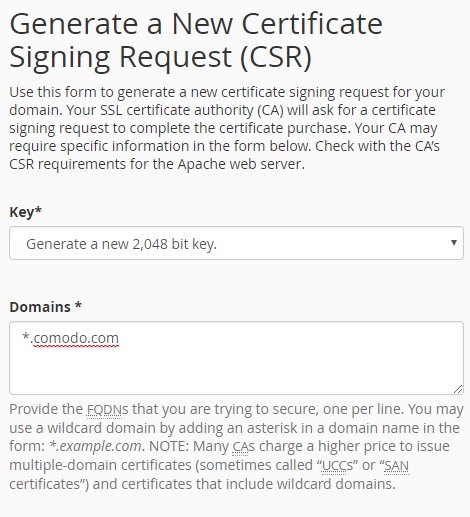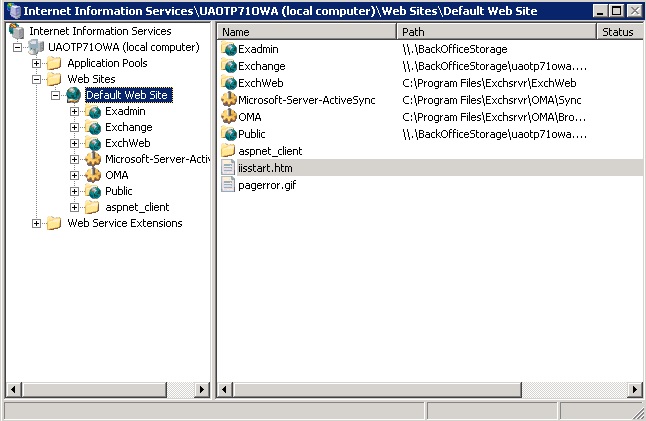Generate Private Key And Csr Online
The following instructions will guide you through the CSR generation process on Nginx (OpenSSL). To learn more about CSRs and the importance of your private key, reference our Overview of Certificate Signing Request article. If you already generated the CSR and received your trusted SSL certificate, reference our SSL Installation Instructions and disregard the steps below.
- Use the form below to generate a new Private Key and a Certificate Signing Request (CSR). Do NOT use this generator if you want to install the certificate on IIS or Exchange (create a Certificate Request on the server instead). All fields required for CSR code generation have to be filled only with Latin letters and Arabic numbers.
- Note: server.key and servercsr.txt are the Private key and the CSR code files. Feel free to use any file names, as long as you keep the.key and.txt extensions. Tip: if you want to generate the Private key and CSR code in another location from the get go, skip step 3.1. And replace the openssl part of the command with.OpenSSL base folder.
- Generate a Certificate Signing Request. Complete this form to generate a new CSR and private key. Organizational Unit. Key Size 2048 4096 Generate CSR.
1. Log in to your server’s terminal.
A private key is usually created at the same time that you create the CSR, making a key pair. Description of CSR fields Common Name - The fully qualified domain name that clients will use to reach your server.For example, to secure your common name must be www.example.com or.example.com for a wildcard certificate. Online x509 Certificate Generator. CertificateTools.com offers the quickest and easiest way to create self-signed certificates, certificate signing requests (CSR), or create a root certificate authority and use it to sign other x509 certificates. We support multiple subject alternative names, multiple common names, all x509 v3 extensions, RSA and elliptic curve cryptography private keys. Easily Generate Your CSR & Private Key. CSR - Certificate Server Request - is a file required to create an SSL certificate. Instructions to generate CSR on-line? Read instructions and fill in all the fields and click 'Generate CSR' button below. Copy and paste CSR to text editor and save it as csr.txt - you will need it after ordering SSL.
You will want to log in via Secure Shell (SSH).
2. Enter CSR and Private Key command
Generate a private key and CSR by running the following command: Fff ea key generator.
Here is the plain text version to copy and paste into your terminal:

Note:Replace “server ” with the domain name you intend to secure.
3. Enter your CSR details
Enter the following CSR details when prompted:
- Common Name: The FQDN (fully-qualified domain name) you want to secure with the certificate such as www.google.com, secure.website.org, *.domain.net, etc.
- Organization: The full legal name of your organization including the corporate identifier.
- Organization Unit (OU): Your department such as ‘Information Technology’ or ‘Website Security.’
- City or Locality: The locality or city where your organization is legally incorporated. Do not abbreviate.
- State or Province: The state or province where your organization is legally incorporated. Do not abbreviate.
- Country: The official two-letter country code (i.e. US, CH) where your organization is legally incorporated.
Note: You are not required to enter a password or passphrase. This optional field is for applying additional security to your key pair.
4. Generate the order

Locate and open the newly created CSR in a text editor such as Notepad and copy all the text including:
Note 1: Your CSR should be saved in the same user directory that you SSH into unless otherwise specified by you.
Crypto key generate rsa command. You need to do this on EXEC mode.
Note 2: We recommend saving or backing up your newly generate “.key ” file as this will be required later during the installation process.
Generate Private Key And Csr
Return to the Generation Form on our website and paste the entire CSR into the blank text box and continue with completing the generation process.
Upon generating your CSR, your order will enter the validation process with the issuing Certificate Authority (CA) and require the certificate requester to complete some form of validation depending on the certificate purchased. For information regarding the different levels of the validation process and how to satisfy the industry requirements, reference our validation articles.
After you complete the validation process and receive the trusted SSL Certificate from the issuing Certificate Authority (CA), proceed with the next step using our SSL Installation Instructions for Nginx using OpenSSL.